- Choosing the Right Tomato Variety
- Determining Your Needs
- Consider the Growing Conditions
- Determinate vs. Indeterminate
- Popular Tomato Varieties
- Research and Experiment
- Planting Techniques for Optimum Growth
- 1. Choose the Right Location
- 2. Prepare the Soil
- 3. Plant at the Right Depth
- 4. Space the Plants Properly
- 5. Provide Support
- 6. Mulch the Soil
- 7. Water Regularly
- 8. Fertilize Appropriately
- 9. Prune and Remove Suckers
- 10. Monitor for Pests and Diseases
- Nurturing Your Tomato Plants
- 1. Choose the Right Variety
- 2. Plant in the Right Location
- 3. Provide Adequate Support
- 4. Water Consistently
- 5. Fertilize Regularly
- 6. Prune and Remove Suckers
- 7. Monitor and Control Pests and Diseases
- 8. Harvest Ripe Tomatoes
- Providing Adequate Sunlight and Water
- Sunlight
- Water
- Conclusion
- Understanding Pruning and Staking
- Why Prune Tomato Plants?
- How to Prune Tomato Plants
- The Benefits of Staking
- Choosing the Right Staking Method
- Conclusion
- Fertilizing Your Tomato Plants
- 1. Choose the Right Fertilizer
- 2. Apply Fertilizer at the Right Time
- 3. Follow the Application Instructions
- 4. Use Organic Fertilizers
- 5. Consider Side-Dressing
- 6. Monitor and Adjust as Needed
- Identifying and Treating Tomato Pests and Diseases
- Pests
- Diseases
- Treatments and Preventive Measures
- Harvesting and Enjoying Your Bountiful Tomato Crop
- 1. Timing is Key
- 2. Gentle Handling
- 3. Sorting and Storing
- 4. Enjoying Your Tomatoes
- 5. Sharing the Harvest
- “Question-Answer”
- What is the secret to doubling your tomato harvest?
- When should I harvest the first green fruits?
- How many green fruits should I harvest?
- What should I do with the green tomatoes after harvesting?
- Will harvesting the green fruits affect the overall flavor of the tomatoes?
- “Video” Double your harvest of tomatoes, cucumbers and other vegetables. Irrigate immediately…
If you’re a tomato lover, there’s nothing quite like the taste of a perfectly ripe, juicy tomato picked fresh from the garden. But sometimes, it can be a challenge to get your tomato plants to produce as many fruits as you’d like. That’s where the secret of the first green fruits comes in.
The first green fruits are the small, under-ripe tomatoes that appear on your plants before they start to turn red. While you may be tempted to wait until they fully ripen, picking these green fruits can actually help you achieve a larger harvest.
When you remove the first green fruits from your tomato plants, it stimulates the plant to produce more flowers and fruits. This is because the plant senses that its current fruits are being taken away and it needs to reproduce. By removing the green fruits, you’re essentially tricking the plant into thinking it needs to produce more to ensure its survival.
To maximize the benefits of picking the first green fruits, it’s important to do it at the right time. Wait until the fruits are about the size of a golf ball and have a pale green color. Gently twist or cut them off the plant, being careful not to damage the stem or any nearby flowers or buds.
Choosing the Right Tomato Variety
Determining Your Needs
Before choosing a tomato variety, it’s important to determine your needs. Consider factors such as taste preferences, growing conditions, and the specific purpose of the tomatoes. Do you want to enjoy fresh, juicy tomatoes in your salads or do you plan on canning them for the winter? Understanding your goals will help you select the most suitable variety.
Consider the Growing Conditions
Tomatoes thrive in different growing conditions. Some varieties are more heat-tolerant, while others prefer cooler climates. Consider the average temperature and weather conditions in your area, as well as the amount of sunlight your garden receives. This information will help you choose a tomato variety that is well-suited to your specific growing conditions.
Determinate vs. Indeterminate
Another factor to consider is whether you prefer determinate or indeterminate tomato plants. Determinate tomatoes produce a crop all at once and have a set growth pattern. They are typically smaller and more compact, making them ideal for small gardens or containers. Indeterminate tomatoes, on the other hand, continue to grow and produce fruit throughout the season. They require more space and support but can yield a larger harvest.
Popular Tomato Varieties
Here are some popular tomato varieties to consider:
- Beefsteak: Known for their large size and rich flavor, beefsteak tomatoes are perfect for slicing.
- Roma: These tomatoes are great for making tomato sauce and paste due to their thick flesh and low moisture content.
- Cherry: Cherry tomatoes are small and sweet, making them an excellent addition to salads and snacking.
- Grape: Similar to cherry tomatoes, grape tomatoes are elongated in shape and have a slightly different flavor profile.
- Heirloom: Heirloom tomatoes come in a wide range of colors and flavors, often with unique characteristics that make them highly sought after by gardeners.
Research and Experiment
Ultimately, the best way to choose the right tomato variety for your garden is to do some research and experiment. Read seed catalogs, talk to local gardeners, and try growing different varieties each season. This will help you discover the tomatoes that grow best in your specific conditions and meet your personal preferences. Happy growing!
Planting Techniques for Optimum Growth
When it comes to maximizing the growth and yield of your tomato plants, proper planting techniques are essential. Here are some tips to help you achieve optimum growth:
1. Choose the Right Location
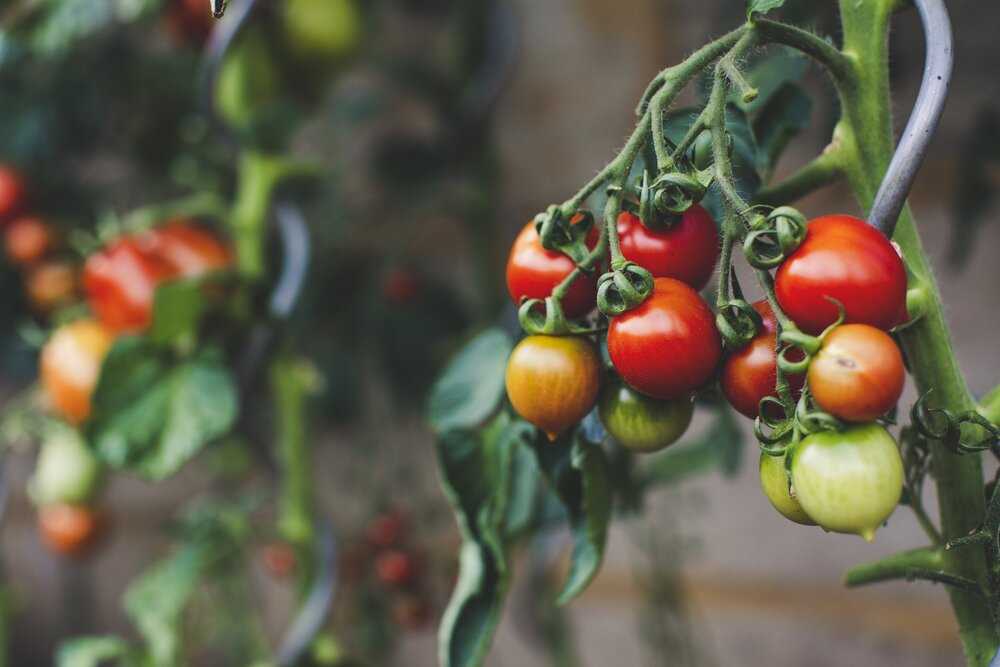
Tomato plants thrive in full sunlight, so it is important to choose a location in your garden that receives at least 6-8 hours of direct sunlight per day. Additionally, make sure the soil is well-drained and rich in organic matter.
2. Prepare the Soil
Prior to planting, prepare the soil by removing any weeds or grass and loosening it with a garden fork or tiller. Mix in compost or well-rotted manure to improve soil fertility and drainage.
3. Plant at the Right Depth
When planting your tomato seedlings, bury them deep in the soil, up to the first set of leaves. This encourages the development of a strong root system and provides stability for the plant as it grows.
4. Space the Plants Properly
To ensure proper air circulation and prevent the spread of diseases, space your tomato plants at least 2-3 feet apart. This also allows each plant to receive sufficient sunlight and nutrients.
5. Provide Support
Most tomato varieties require support to prevent the vines from sprawling on the ground. You can use stakes, trellises, or cages to provide support and keep the plants upright. This not only improves air circulation but also makes it easier to harvest the fruits.
6. Mulch the Soil
Applying a layer of organic mulch around the base of the plants helps conserve moisture, suppress weeds, and regulate soil temperature. Straw, hay, or shredded bark are all excellent choices for tomato plants.
7. Water Regularly
Tomato plants need regular and consistent watering, especially during periods of drought. Water deeply and evenly, making sure the soil is moist but not waterlogged. Avoid wetting the leaves to prevent the spread of diseases.
8. Fertilize Appropriately
Provide your tomato plants with a balanced fertilizer to ensure they receive essential nutrients for growth. Follow the instructions on the fertilizer package for proper application and avoid over-fertilizing, as this can lead to excessive foliage growth at the expense of fruit production.
9. Prune and Remove Suckers
Pruning your tomato plants helps improve air circulation, control diseases, and promote better fruit development. Remove the suckers, which are the small shoots that develop in the leaf axils, as they divert energy from the main stem and fruits.
10. Monitor for Pests and Diseases
Regularly inspect your tomato plants for any signs of pests or diseases, such as aphids, hornworms, blight, or wilting. Take appropriate action if necessary, such as using organic pest control methods or removing infected plants to prevent the spread.
By following these planting techniques, you can create optimal growing conditions for your tomato plants and increase your tomato harvest. Happy gardening!
Nurturing Your Tomato Plants
1. Choose the Right Variety
When it comes to nurturing your tomato plants, one of the first steps is choosing the right variety. There are many different types of tomatoes, and each one has its own specific needs and characteristics. Some varieties are more suited to container gardening, while others thrive in the ground. Take into consideration factors such as your climate, available space, and personal preferences when selecting the type of tomatoes to grow.
2. Plant in the Right Location
Tomatoes require full sun to thrive, so it’s essential to choose a planting location that receives at least 6-8 hours of direct sunlight per day. Ensure that the site has well-draining soil, as excessive moisture can lead to root rot. If you’re growing tomatoes in containers, make sure they are placed in a sunny spot and have proper drainage holes.
3. Provide Adequate Support
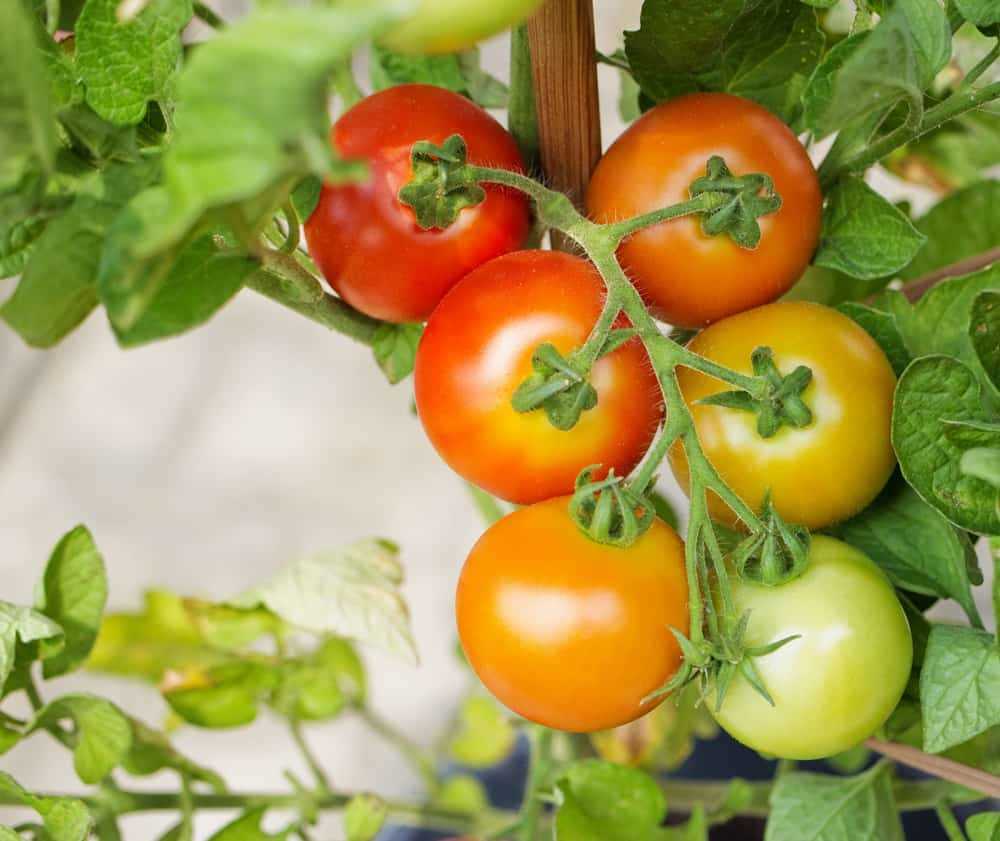
Tomato plants can grow quite tall and heavy, so providing them with adequate support is crucial. This can be done by using stakes, trellises, or cages. As the plants grow, gently tie them to the support structure to prevent them from bending or breaking. Proper support will not only keep the plants upright but also promote good air circulation and help prevent diseases.
4. Water Consistently
Consistent and adequate watering is key to the success of your tomato plants. Tomatoes generally need about 1-1.5 inches of water per week, and it’s important to water them deeply rather than shallowly. Water at the base of the plant, avoiding wetting the leaves, as this can promote fungal diseases. Keep an eye on the moisture level of the soil, and adjust your watering frequency accordingly, especially during hot and dry periods.
5. Fertilize Regularly
Tomatoes are heavy feeders and require regular fertilization to grow and produce abundant fruits. Use a balanced fertilizer or organic amendments rich in nutrients like nitrogen, phosphorus, and potassium. Apply the fertilizer according to the package instructions, and be careful not to overfertilize, as this can lead to excessive foliage growth and fewer fruits.
6. Prune and Remove Suckers
Pruning and removing suckers is an important step in nurturing your tomato plants. Suckers are the small shoots that grow in the leaf axils of tomato plants. While they may develop into branches, their removal helps redirect the plant’s energy towards fruit production. Additionally, pruning can improve air circulation and reduce the risk of diseases.
7. Monitor and Control Pests and Diseases
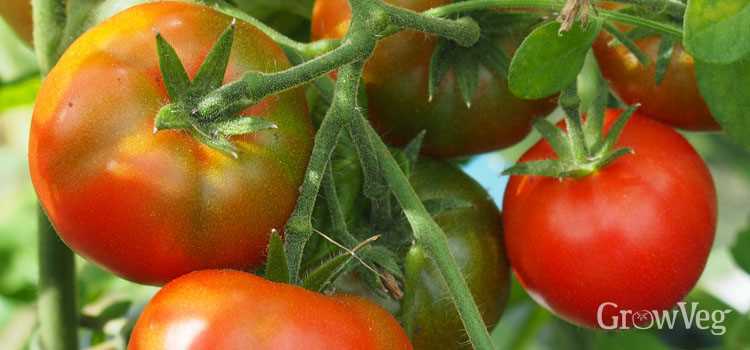
Regularly inspect your tomato plants for signs of pests or diseases and take appropriate action. Common tomato pests include aphids, whiteflies, and tomato hornworms, while diseases like blight and blossom end rot can also be problematic. Use organic insecticides or natural remedies when possible, and take preventive measures such as rotating crops and cleaning up garden debris to minimize the risk of disease.
8. Harvest Ripe Tomatoes
Finally, the ultimate reward for nurturing your tomato plants is the harvest of ripe, juicy tomatoes. Keep an eye on the ripening process and pick the fruits when they reach the desired size and color. Vine-ripened tomatoes have the best flavor, so leave them on the vine as long as possible. Store harvested tomatoes in a cool, dry place, away from direct sunlight, to prolong their shelf life and enjoy the fruits of your labor.
| Tip | Description |
|---|---|
| Disease Prevention | Rotate your tomato plants each year to reduce the risk of diseases. |
| Staking vs. Caging | Choose the most suitable method of support for your tomato plants. |
| Watering Schedule | Establish a consistent watering schedule to provide optimal moisture for your tomatoes. |
| Fertilizer Application | Apply fertilizer regularly and follow the recommended dosage to provide essential nutrients. |
Providing Adequate Sunlight and Water
If you want to double your tomato harvest, it’s important to provide your plants with adequate sunlight and water. Both of these factors are essential for the healthy growth and development of your tomato plants.
Sunlight
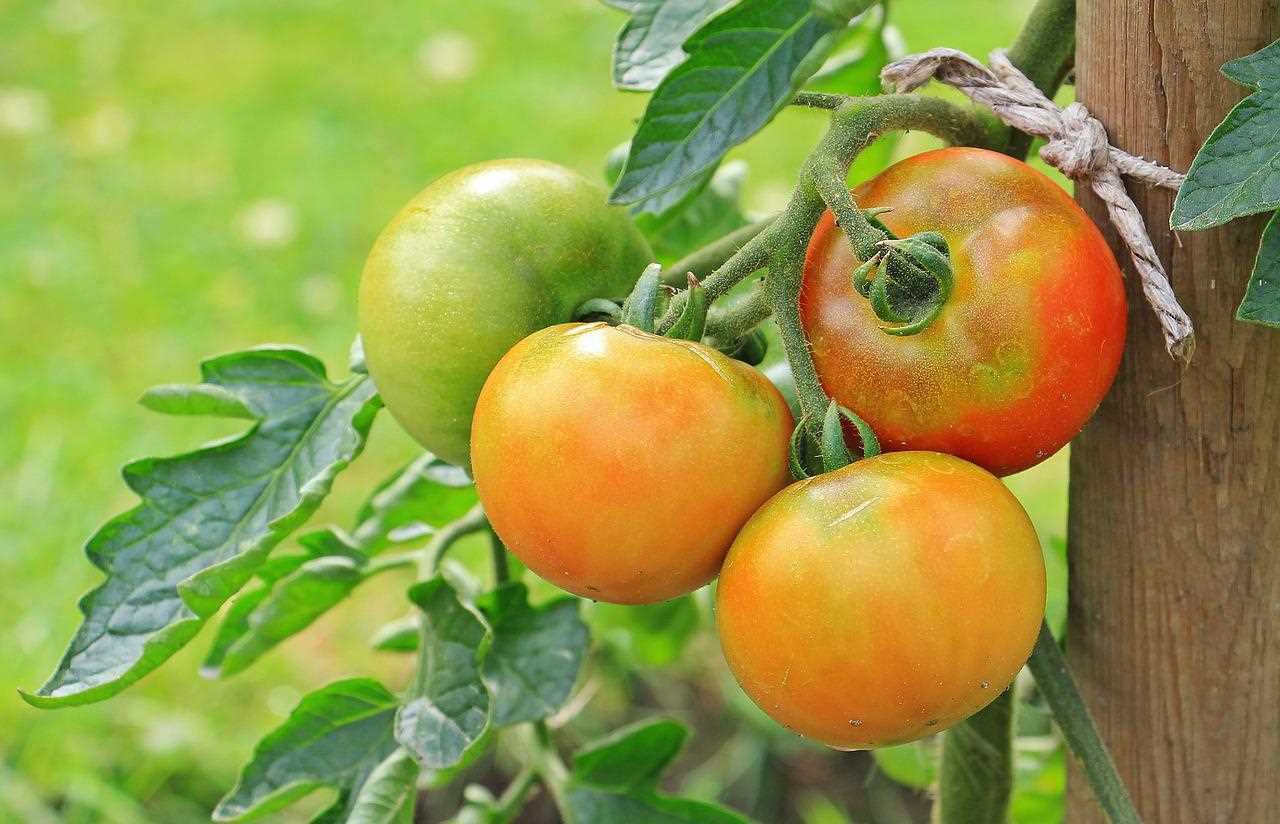
Tomatoes are sun-loving plants that require at least 6 to 8 hours of direct sunlight each day. Without enough sunlight, tomato plants may become weak, leggy, and produce fewer fruits. Therefore, it’s important to choose a sunny location for planting your tomatoes.
If you have limited space or your garden is shaded by trees or buildings, consider using containers or raised beds that can be moved to sunnier spots. Additionally, you can use reflective mulch or plant sun-loving companion plants to maximize the amount of sunlight reaching your tomato plants.
Water
Tomato plants require consistent and adequate water to thrive. Inconsistent watering can lead to blossom end rot, splitting, and other fruit deformities. The frequency and amount of water needed will depend on various factors such as temperature, soil type, and stage of plant growth.
It’s generally recommended to water tomato plants deeply, ensuring that the entire root system is thoroughly soaked. Watering should be done early in the morning to allow foliage to dry before evening, reducing the risk of fungal diseases. Avoid wetting the leaves and aim to water at the base of the plant to minimize the chance of diseases spreading.
Using mulch around your tomato plants can help conserve soil moisture and reduce water evaporation. Organic mulches, such as straw or wood chips, can also improve soil fertility as they break down over time.
Conclusion
Providing adequate sunlight and water are crucial for doubling your tomato harvest. By choosing a sunny location, ensuring your plants get enough direct sunlight, and watering them consistently and deeply, you can promote healthy growth and increase the number of tomatoes you harvest. Remember to monitor the moisture levels of your soil and adjust your watering schedule accordingly. With the right care, you can enjoy a bountiful tomato harvest in no time!
Understanding Pruning and Staking
Pruning and staking are two essential techniques for maximizing the productivity and health of tomato plants. When done correctly, they can help you achieve a bumper harvest of delicious tomatoes.
Why Prune Tomato Plants?
Pruning involves removing certain parts of the tomato plant, such as suckers (also known as side shoots) and lower leaves. This practice helps redirect the plant’s energy into producing more fruit, rather than wasting it on unnecessary growth.
By removing suckers, you can focus the plant’s energy on the main stem, which encourages larger and juicier tomatoes. Pruning also improves air circulation and sunlight penetration throughout the plant, reducing the risk of diseases and facilitating better fruit ripening.
How to Prune Tomato Plants
When your tomato plants have developed a few sets of true leaves, it’s time to start pruning. Look for any small shoots that emerge from the leaf axils (the points where the leaf stems meet the main stem) and remove them by pinching them off with your fingers or using clean pruning shears.
It’s important to note that not all tomato varieties require pruning. Determinate varieties, which have a predetermined height and stop growing once fruit sets, typically do not need pruning. However, indeterminate varieties, which continue to grow and produce fruit throughout the season, greatly benefit from pruning.
The Benefits of Staking
Staking is the practice of providing support to tomato plants to keep them upright. In addition to preventing the plants from sprawling on the ground, staking offers several advantages:
- Improved airflow: Staked plants have increased air circulation, reducing the risk of diseases caused by excess moisture.
- Easier harvesting: Staked plants are more organized and accessible, making it easier to find and pick ripe tomatoes.
- Reduced risk of pest damage: Staking keeps the fruits off the ground, making them less accessible to pests and reducing the likelihood of rotting.
Choosing the Right Staking Method
There are several staking methods to choose from, depending on your space, budget, and personal preference. Here are a few popular options:
- Cage: Tomato cages are ready-made structures made of wire or wood that surround the plants, providing support. They are easy to install and reusable season after season.
- Stakes: Wooden or metal stakes can be used to support individual plants. They should be at least 6 feet tall and inserted at least 6 inches into the ground.
- Trellis: Trellises are vertical structures that provide support for multiple plants. They can be homemade or purchased and offer flexibility in terms of design and space utilization.
Conclusion
Pruning and staking are valuable techniques for growing healthy and productive tomato plants. By knowing when and how to prune your plants and choosing the right staking method, you can double your tomato harvest and enjoy a bountiful supply of flavorful tomatoes throughout the season.
Fertilizing Your Tomato Plants
Fertilizing your tomato plants is an essential step in achieving a bountiful harvest. Tomatoes are heavy feeders, meaning they require plenty of nutrients to grow and produce fruit. Here are some tips on how to fertilize your tomato plants effectively.
1. Choose the Right Fertilizer
There are various types of fertilizers available, but it’s important to choose one that is specifically formulated for tomatoes. Look for a balanced fertilizer with equal amounts of nitrogen, phosphorus, and potassium (NPK). Additionally, select a fertilizer that is high in organic matter to promote healthy soil.
2. Apply Fertilizer at the Right Time
Timing is crucial when it comes to fertilizing tomato plants. It’s best to apply fertilizer before planting or when the plants are just starting to flower. This will provide the necessary nutrients for early growth and fruit development. Avoid applying fertilizer when the plants are already stressed or in extreme heat, as it can lead to fertilizer burn.
3. Follow the Application Instructions
Read the instructions on the fertilizer packaging carefully and follow the recommended application rates. It’s essential not to over-fertilize, as this can harm the plants and lead to excessive foliage growth instead of fruit production. If in doubt, it’s better to under-fertilize and monitor the plants’ response before applying more fertilizer.
4. Use Organic Fertilizers
Organic fertilizers, such as compost or well-rotted manure, are excellent options for tomato plants. They provide slow-release nutrients to the soil and improve its overall structure. Using organic fertilizers also reduces the risk of chemical buildup in the soil and promotes a healthier environment for beneficial soil organisms.
5. Consider Side-Dressing
Side-dressing is a technique where additional fertilizer is applied around the base of the tomato plants during the growing season. This helps replenish nutrients that have been depleted by the plants. Use a balanced, slow-release fertilizer for side-dressing, and apply according to the instructions provided.
6. Monitor and Adjust as Needed
Regularly monitor your tomato plants for signs of nutrient deficiencies or excesses. Common signs of nutrient deficiencies include yellowing leaves, stunted growth, and poor fruit production. If necessary, adjust the fertilizer application by adding more or adjusting the type of fertilizer used.
Remember, proper fertilization is just one aspect of growing healthy tomato plants. Take care to provide adequate water, sunlight, and proper spacing to ensure optimal growth and maximum fruit production.
Identifying and Treating Tomato Pests and Diseases
Tomatoes can be susceptible to various pests and diseases that can significantly reduce their productivity and health. It is important to be able to identify these issues early on and take the necessary steps to treat and prevent further damage. Here are some common tomato pests and diseases to look out for:
Pests
- Aphids: These small green or black insects suck sap from the plant and can cause the leaves to curl or become distorted. Use insecticidal soap or neem oil to control aphid populations.
- Hornworms: Hornworms are large caterpillars that can munch through tomato leaves and stems. Handpick them off the plants or use organic insecticides that contain Bacillus thuringiensis (Bt).
- Whiteflies: These tiny, white flying insects can cause yellowing of leaves and transmit plant viruses. Introduce beneficial insects like ladybugs or use sticky traps to control whitefly populations.
- Spider Mites: Spider mites are tiny arachnids that suck sap from plant leaves and produce fine webbing. Use insecticidal soap or water sprays to control spider mite populations.
Diseases
- Early Blight: Early blight is a fungal disease that causes dark spots on the lower leaves, which eventually turn yellow and drop off. Remove infected leaves and treat with copper-based fungicides.
- Late Blight: Late blight is another fungal disease that affects both leaves and fruits, causing dark, water-soaked lesions. Apply copper-based fungicides and remove infected plants to prevent spread.
- Blossom End Rot: This physiological disorder causes brown, leathery patches on the bottoms of tomatoes. It is caused by calcium deficiency or uneven water supply. Maintain consistent watering and apply calcium-rich foliar sprays.
- Fusarium Wilt: Fusarium wilt is a soil-borne fungal disease that causes yellowing, wilting, and eventual death of the plant. Use disease-resistant varieties and practice crop rotation to prevent infection.
Treatments and Preventive Measures
To treat tomato pests and diseases, it is important to take action as soon as symptoms appear. Here are some general tips:
- Inspect your plants regularly: Check your plants for any signs of pests or diseases, such as discolored leaves, chewed foliage, or wilting.
- Remove affected plants or leaves: Remove and destroy any infected plants or leaves to prevent the spread of disease.
- Use organic controls: Whenever possible, use organic and environmentally-friendly pest and disease control methods, such as neem oil, insecticidal soap, or beneficial insects.
- Practice crop rotation: Rotate your tomato crops each year to prevent the buildup of soil-borne diseases.
- Maintain good plant hygiene: Keep the garden clean and remove any debris or fallen leaves that can harbor pests or diseases.
- Provide proper nutrition and watering: Make sure your tomatoes receive adequate nutrients and water to prevent physiological disorders and ensure their overall health.
By being vigilant and taking the necessary steps to treat and prevent pests and diseases, you can ensure a healthy and bountiful tomato harvest.
Harvesting and Enjoying Your Bountiful Tomato Crop
After following the secret to doubling your tomato harvest by picking the first green fruits, you are now ready to harvest the rest of your bountiful tomato crop. Here are some tips to ensure you have a successful and enjoyable harvest:
1. Timing is Key
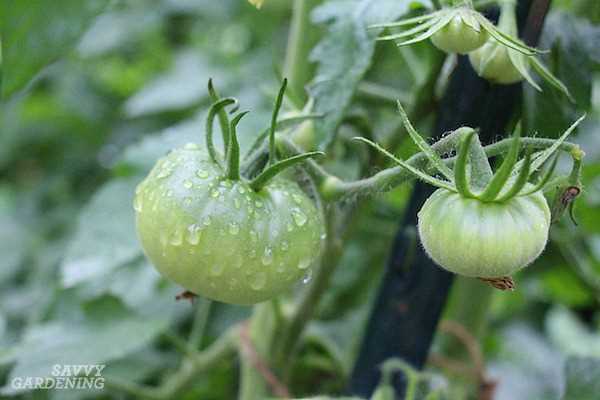
It is important to wait until the tomatoes are fully ripe before harvesting. Ripe tomatoes will have a bright, vibrant color and a slightly soft texture. Avoid picking them too early as they may not ripen fully off the vine.
2. Gentle Handling
When harvesting your tomatoes, be gentle to avoid damaging the fruits. Use a pair of scissors or handheld pruners to cut the stem about half an inch above the fruit. Avoid pulling or twisting the tomatoes, as this can cause them to bruise or detach from the vine prematurely.
3. Sorting and Storing
Once you have harvested your tomatoes, sort them based on their ripeness. Separate the fully ripe ones from the slightly green ones. Fully ripe tomatoes can be enjoyed immediately, while the green ones can be stored for future use.
To store green tomatoes, place them in a single layer in a cool, dark place with good ventilation. Avoid stacking or overcrowding them, as this can lead to bruising and spoilage. Check them regularly and remove any that show signs of ripening.
4. Enjoying Your Tomatoes
With a bountiful tomato crop, there are numerous ways to enjoy your harvest. Here are a few ideas:
- Fresh in salads: Slice the ripe tomatoes and add them to a fresh green salad for a burst of flavor and color.
- Caprese salad: Layer ripe tomatoes with fresh mozzarella cheese and basil leaves, then drizzle with balsamic vinegar and olive oil.
- Salsa and sauces: Use your tomatoes to make homemade salsa or sauces to enhance the flavor of your favorite dishes.
- Canned or preserved: If you have an abundance of tomatoes, consider canning or preserving them to enjoy throughout the year.
5. Sharing the Harvest
If you find yourself with more tomatoes than you can consume, consider sharing your bountiful harvest with friends, family, or neighbors. They will surely appreciate the delicious fresh tomatoes.
By following these tips, you can ensure a successful harvest and fully enjoy the fruits of your labor. Happy tomato growing!
“Question-Answer”
What is the secret to doubling your tomato harvest?
The secret to doubling your tomato harvest is to harvest the first green fruits. By removing the first fruits when they are still green, you allow the plant to focus its energy on producing more fruits, resulting in a higher overall harvest.
When should I harvest the first green fruits?
You should harvest the first green fruits when they are about the size of a golf ball and have a slight color change. This usually occurs about 45-60 days after planting, depending on the tomato variety. Be careful not to wait too long, as the fruits may start to turn yellow or red and become ripe.
How many green fruits should I harvest?
It is recommended to harvest about 50% of the green fruits on each tomato plant. This allows for a good balance between maximizing the harvest and ensuring the plant has enough fruits left to continue growing and ripening. If you harvest too many green fruits, the plant may be unable to produce enough energy for the remaining fruits.
What should I do with the green tomatoes after harvesting?
After harvesting the green tomatoes, you can use them in a variety of ways. They can be fried, pickled, or added to dishes like salads or salsas. If you prefer, you can also allow them to ripen indoors by placing them in a paper bag with a ripe banana or apple. This will speed up the ripening process and allow you to enjoy fully ripe tomatoes.
Will harvesting the green fruits affect the overall flavor of the tomatoes?
No, harvesting the green fruits will not affect the overall flavor of the tomatoes. The flavor of tomatoes is primarily determined by the variety and growing conditions, rather than the stage of ripeness. In fact, some people even prefer the taste of green tomatoes in certain recipes or dishes.







